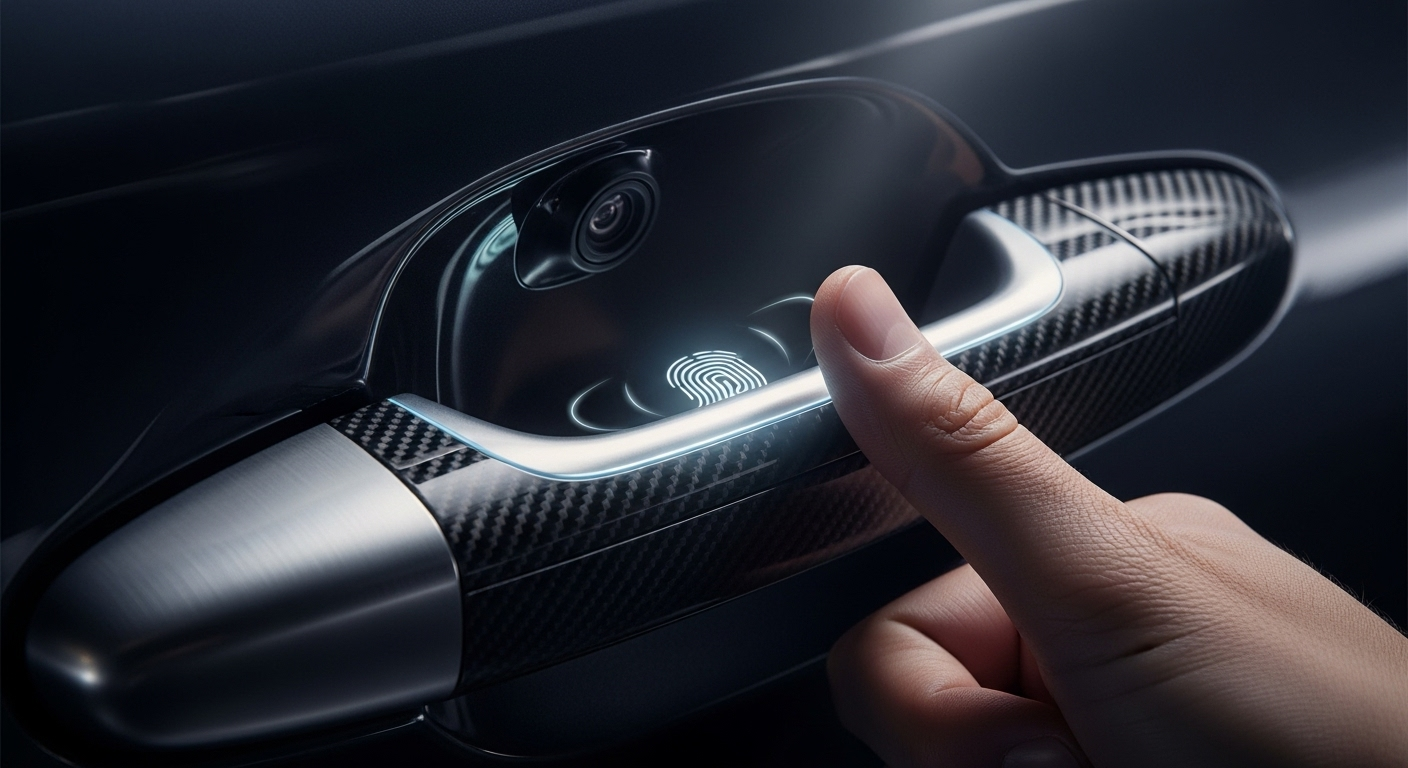Biometric Driver Authentication: The Future of Vehicle Security
Imagine sliding into your car, placing your hand on the steering wheel, and the vehicle instantly recognizing you. No keys, no passwords, just you and your unique biological signature. This isn't science fiction; it's the cutting-edge world of biometric driver authentication, poised to revolutionize automotive security and personalization.

The Evolution of Automotive Security
The journey of automotive security has been a long and winding road. From simple mechanical locks to electronic key fobs, each iteration has aimed to stay one step ahead of potential thieves. However, traditional methods have their limitations. Keys can be lost or stolen, and even sophisticated electronic systems can be hacked or bypassed.
Biometric authentication represents a quantum leap in this evolution. By relying on unique biological characteristics, it offers a level of security that is incredibly difficult to replicate or forge. This technology not only enhances protection against theft but also opens up new possibilities for personalization and user convenience.
How Biometric Authentication Works in Vehicles
At its core, biometric authentication in vehicles relies on the same principles as other biometric systems. It captures and analyzes unique biological traits to verify a user’s identity. In the automotive context, this can take several forms:
-
Fingerprint Recognition: Sensors embedded in door handles, steering wheels, or start buttons can quickly scan and verify a driver’s fingerprint.
-
Facial Recognition: Cameras mounted on the dashboard or rearview mirror can analyze facial features to identify the driver.
-
Retinal Scanning: Though less common, some high-end vehicles are exploring retinal scanning as an ultra-secure method of authentication.
-
Voice Recognition: Advanced audio systems can analyze voice patterns to confirm a driver’s identity.
-
Heartbeat Sensors: Emerging technology can even detect a driver’s unique cardiac rhythm through the steering wheel.
These systems work in conjunction with the vehicle’s onboard computer, comparing the captured biometric data against stored profiles to grant or deny access and operation of the vehicle.
Benefits Beyond Security
While enhanced security is the primary driver behind biometric authentication in vehicles, the benefits extend far beyond theft prevention. This technology enables a new level of personalization and convenience:
-
Automatic Profile Adjustment: Upon recognizing the driver, the vehicle can automatically adjust seat positions, mirror angles, climate settings, and even music preferences.
-
Multi-Driver Management: Families or fleet operators can easily manage access for multiple drivers without the need for multiple keys or fobs.
-
Health Monitoring: Advanced biometric sensors could potentially monitor driver health and alertness, enhancing safety.
-
Seamless Integration with Smart Devices: Biometric authentication can facilitate smoother integration with smartphones and other personal devices.
-
Enhanced Rental and Car-Sharing Services: Biometrics could streamline the process of accessing and using shared vehicles, eliminating the need for physical key exchanges.
Challenges and Considerations
Despite its promise, the implementation of biometric authentication in vehicles is not without challenges. Privacy concerns top the list, as consumers and regulators grapple with the implications of vehicles collecting and storing sensitive biological data. Ensuring this data is securely stored and protected from hacking attempts is paramount.
There are also practical considerations. Environmental factors like extreme temperatures, dirt, or moisture could potentially affect the reliability of biometric sensors. Additionally, the system needs to account for emergency situations where an unauthorized user may need to operate the vehicle.
Standardization across the industry is another hurdle. As different manufacturers develop proprietary systems, there’s a risk of fragmentation that could complicate matters for consumers, especially in the used car market.
The Road Ahead
As biometric technology continues to advance and costs decrease, we can expect to see wider adoption across various vehicle segments. Industry experts predict that by 2025, a significant percentage of new vehicles will feature some form of biometric authentication.
The future may also bring more advanced applications. Imagine a car that can detect driver fatigue through eye movement analysis or stress levels through skin conductivity sensors, automatically adjusting driving modes or even taking control if necessary.
Biometric authentication is set to redefine our relationship with vehicles, making them more secure, personalized, and integrated into our digital lives than ever before. As this technology matures, it promises to deliver a driving experience that is not only safer but also more tailored to individual needs and preferences.
While challenges remain, the potential benefits of biometric driver authentication are too significant to ignore. As automakers, tech companies, and regulators work together to address concerns and refine the technology, we stand on the brink of a new era in automotive security and personalization. The car of the future won’t just be a mode of transportation; it will be a smart, secure, and deeply personal extension of ourselves.





